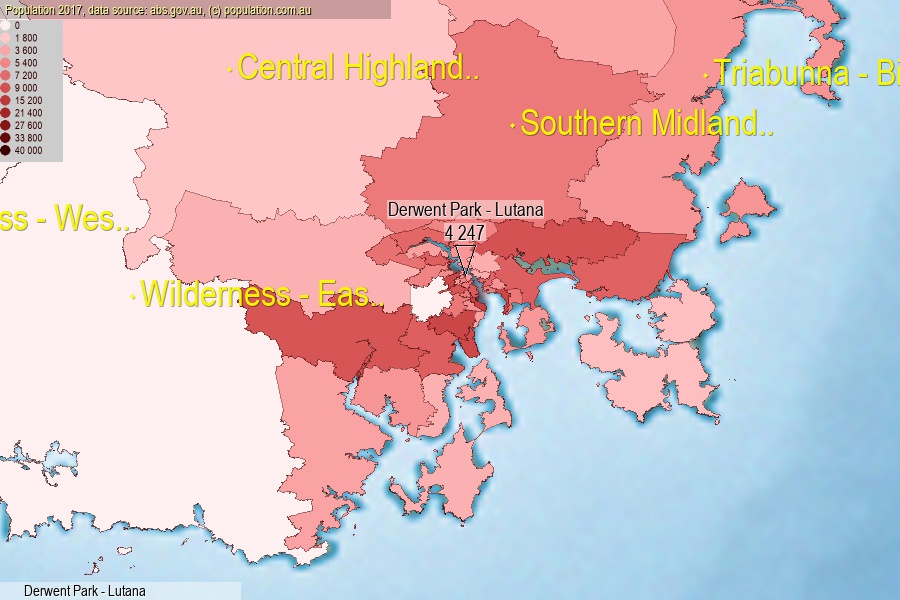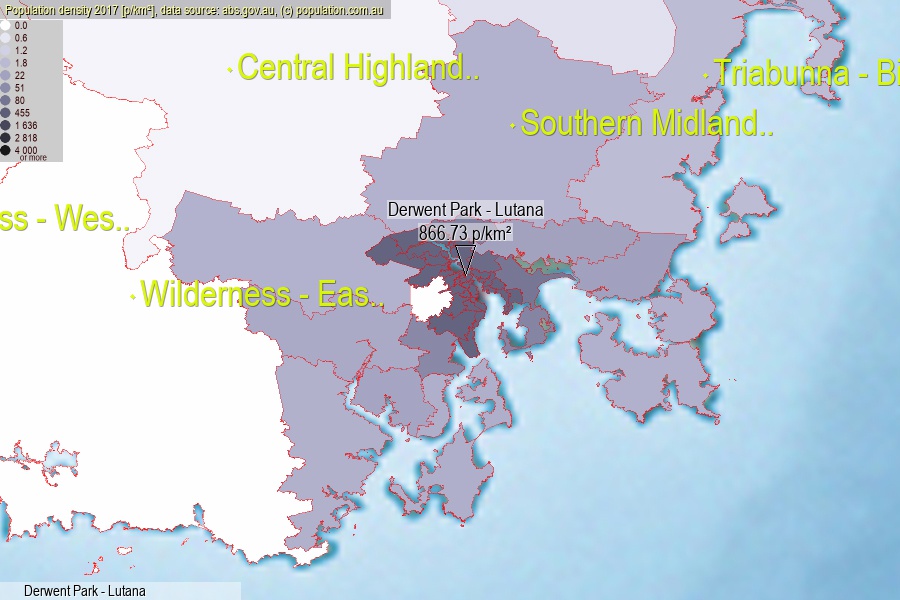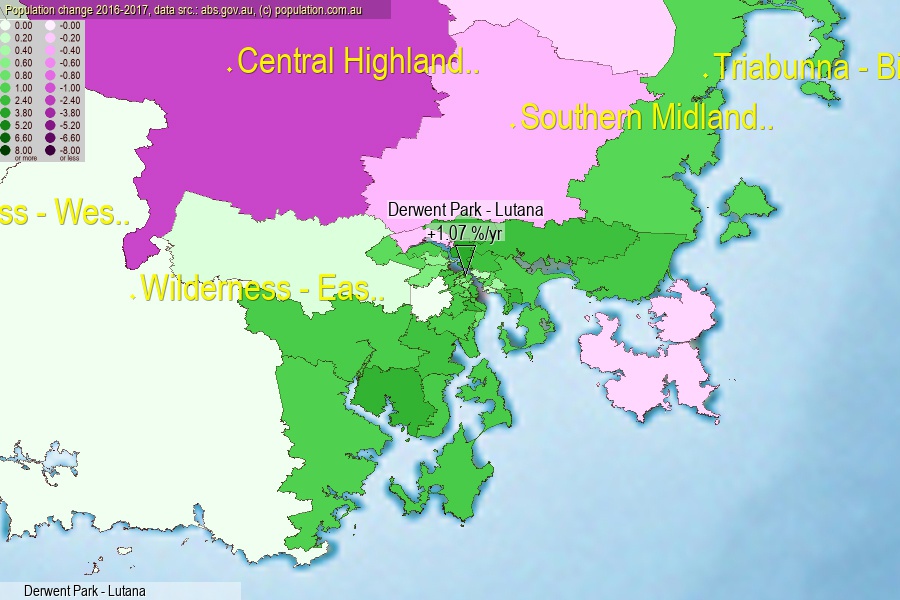 population.com.au
population.com.auLast official estimated population of Derwent Park - Lutana (as Statistical Area Level 2) was 4 247 people (on 2017-06-30)[2]. This was 0.02% of total Australian population and 0.806% of TAS population. Area of Derwent Park - Lutana is 4.90 km², in this year population density was 866.73 p/km² . If population growth rate would be same as in period 2016-2017 (+1.07%/yr), Derwent Park - Lutana population in 2025 would be 4 625. [0]



Click to enlarge. Derwent Park - Lutana is located in the center of the images.
Population [people], population density [p./km²] and population change [%/year] [2]
View borders » (new window) [4]
[1991-1992] -1.05 %/Yr.
[1992-1993] -0.73 %/Yr.
[1993-1994] -1.49 %/Yr.
[1994-1995] -1.54 %/Yr.
[1995-1996] -0.25 %/Yr.
[1996-1997] +0.94 %/Yr.
[1997-1998] +0.27 %/Yr.
[1998-1999] +0.27 %/Yr.
[1999-2000] +0.16 %/Yr.
[2000-2001] +0.66 %/Yr.
[2001-2002] -1.86 %/Yr.
[2002-2003] +0.71 %/Yr.
[2003-2004] -0.80 %/Yr.
[2004-2005] -3.39 %/Yr.
[2005-2006] -0.52 %/Yr.
[2006-2007] -0.21 %/Yr.
[2007-2008] +0.14 %/Yr.
[2008-2009] +0.48 %/Yr.
[2009-2010] +0.43 %/Yr.
[2010-2011] +0.33 %/Yr.
[2011-2012] -0.52 %/Yr.
[2012-2013] -0.31 %/Yr.
[2013-2014] -0.07 %/Yr.
[2014-2015] -0.12 %/Yr.
[2015-2016] +0.05 %/Yr.
[2016-2017] +1.07 %/Yr.
[0] Calculated with linear interpolation from officially estimated population
[1] Read more about SA2 and Australian Statistical Geography Standard (ASGS) on abs.gov.au
[2] Population data from Australian Bureau of Statistics (Population and density: 2017; change: 2016-2017)
[3] Digital Boundaries: Australian Statistical Geography Standard (ASGS) 2016.
[4] Border coordinates are simplifyed using Ramer-Douglas-Peucker algorithm.